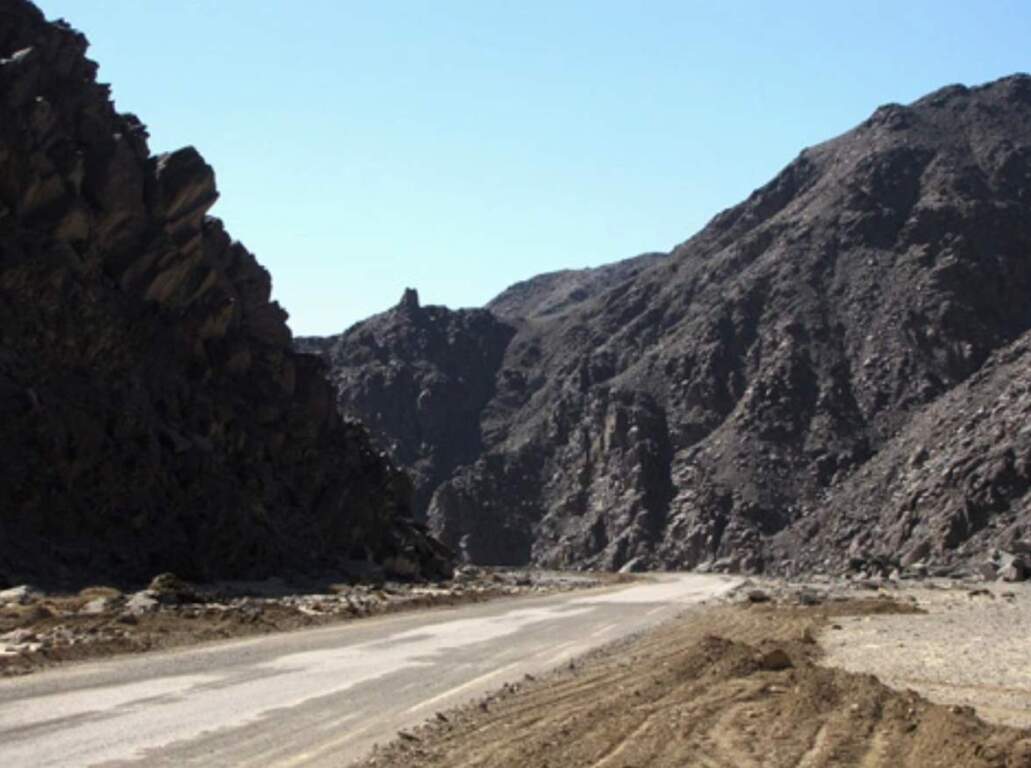The Wadi Hammamat, (Valley of Many Baths’), one of numerous wadis or dry valleys in the Eastern Desert’s rocky highlands, serves as the center stretch of one of the most important routes between the Nile and the Red Sea.
The Wadi Hammamat is located halfway between the Nile and the Red Sea, approximately 60 kilometers from either Quft (ancient Coptos) on the Nile or Quseir (near ancient Myos Hormos). The Hammamat road is one of the shortest Nile-Red Sea routes, therefore, it has been used for millennia and is now dotted with ancient ruins and resting sites, as well as hundreds of rock inscriptions or graffiti. In addition, considerable mining and quarrying have taken place in or near Wadi Hammamat.
The geographical term “Wadi Hammamat” refers to the area from the spring and Roman road station at Bir Hammamat to the natural gate in the mountains at Bir Umm Fawakhir (25°58′−26°35′ N, 33°32′-33°35′ E). The Wadi Hammamat contains quarries for both breccia verde antica, a variegated green stone, and bekhenstone, which was highly valued by the ancient Egyptians. Bekhen-stone, found nowhere else in Egypt, is a Precambrian graywacke with a fine-grained, rough texture. When first cut, the stone is dark gray, but it weathers to a reddish color. The majority of the greater than 400 hieroglyphic and hieratic rock inscriptions in Wadi Hammamat document the activities of expeditions dispatched to gather the valuable bekhen-stone for the pharaohs’ statues, sarcophagi, and building projects.

